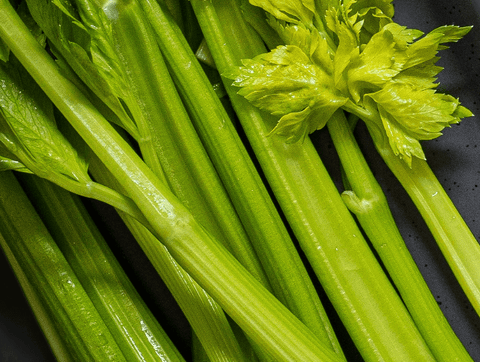Celery allergy
Recognising celery allergy
Symptoms of a celery allergy can vary and may include:
- Skin Reactions: Hives, itching, eczema, and swelling, particularly around the mouth and face.
- Gastrointestinal Issues: Nausea, vomiting, abdominal pain, and diarrhea.
- Respiratory Problems: Nasal congestion, runny nose, coughing, wheezing, and difficulty breathing.
- Oral Allergy Syndrome: Itching or swelling in the mouth, lips, tongue, and throat after consuming celery.
- Anaphylaxis: A severe, potentially life-threatening allergic reaction that requires immediate medical attention. Symptoms include swelling of the throat, difficulty breathing, rapid pulse, dizziness, and loss of consciousness.
Types of celery allergy reactions
IgE-Mediated Reactions: These are immediate allergic reactions that occur within minutes to hours after consuming celery. Symptoms can include hives, swelling, respiratory issues, and anaphylaxis.
IgG-Mediated Reactions: These reactions are delayed and can occur hours to days after exposure to celery. Symptoms often include gastrointestinal issues such as nausea and diarrhea.
Alternative foods to eat
If you have a celery allergy, you can substitute celery with other vegetables that do not trigger an allergic reaction. Some alternatives include:
- Cucumber: Provides a similar crunchy texture and mild flavour.
- Carrots: Offer a sweet taste and can be used in salads, soups, and stews.
- Bell Peppers: Add a crisp texture and sweet flavour to dishes.
- Zucchini: Can be used in a variety of cooked dishes and provides a similar texture.
















